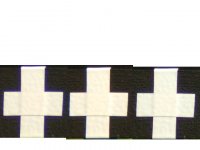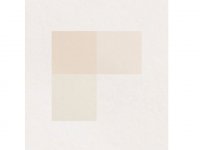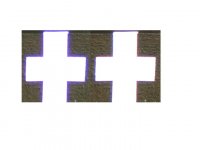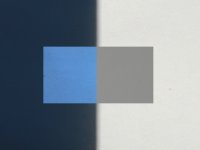henry link
Well-known member
This post was delayed because I’ve been camping in the Great Smoky Mountains National Park this past week. I spent a few hours with these binoculars before I left, concentrating on the 8x42 because I have a Zeiss FL 8x42 for comparison and because I’m just more interested in that configuration. So, what follows are some measurements and tests I was able to do over that time, not a complete review.
True Aperture: Curiously the 8x42 had a little less than the 10x42. The 8x42 varies with focusing distance from about 39mm at close focus to 41mm at infinity focus. The 10x42 varies with focus from 40mm to 42mm.
Eye Relief: 8x42 – 20mm from the eyelens, 15mm from the rim of the fully collapsed eyecup. 10x42 - 18mm from the eyelens, 13mm from the eyecup.
FOV: I didn’t measure this directly, but I carefully compared the FOV of the 8x42 to the Zeiss 8x56 FL and Nikon 8x32 SE, which were the closest in FOV among my binoculars. The 8x42 Intrepid fell neatly between the two, which would put it around 390’-393’ (close enough to Steve’s 396’ measurement). I didn’t measure the 10x42.
Resolution measured at 64x (8x42), 80x (10x42): The four barrels varied from about 3.5 arc sec in the right barrel of the 8x42 to about 4 arc sec in the right barrel of the 10x42. Not good enough for alpha class bragging rights, but perfectly fine. There is much more detail in the image than the eye can see at normal magnification.
Star Test at 64x, (8x42), 80x (10x42): The right barrel of the 8x42 was quite good by binocular standards. The only obvious problem was the expected spherical aberration. All the other barrels had about the same amount SA. I’ve seen less in the best binoculars, but also more in some very expensive ones. The left barrels of both binoculars showed coma, from misaligned optics, possibly a byproduct of collimation. The right barrel of the 10x42 showed some astigmatism, which probably explains its relatively worse resolution measurement. One really good barrel out of four ain’t bad when it comes to binoculars of any price and none of the defects were severe enough for me to notice any effect at normal magnification in daylight. The astigmatism in the 10x42 could soften the image in low light when the full aperture is used. I also star tested the good barrel of the 8x42 stopped down to 30mm to simulate daylight use. As expected, the 30mm the star test was substantially improved as a result of reduced SA.
Chromatic Aberration: Longitudinal CA is very well corrected for a binocular, indicating that the ED glass really does do what it’s supposed to do. The attached photo below on the left shows the cross-shaped center of my CA target as imaged through three binoculars: a conventional achromatic doublet (Nikon 8x32 SE) on the left, the Intrepid 8x42 in the middle and the Zeiss 8x42 FL on the right. The purple fringe in the SE image is typical longitudinal CA found in fast binocular optics, which you can see is almost absent in the other two. I should add that this is worst case CA from the entire objective. In daylight at 8X, even the obvious purple fringe seen in the SE image is not visible at all.
Control of lateral color (Transverse CA) in the 8x42 Intrepid is about average for binoculars. Lateral color is the type of color fringing you can actually see in binoculars in bright light. It becomes stronger away from the field center, but can sometimes be seen in the very middle if the eye is slightly decentered. Some expensive roof prism binoculars with complex objectives have quite a lot of this form of CA. The 8x42 Intrepid shows slightly less lateral color than the 8x42 FL. It has about the same amount as the 8x56 FL, which is a good result for a binocular of this type, but the 8x32 SE or most any other simple Porro has less than any of these.
Off Axis Sharpness: The 8x42 is similar to the Zeiss 8x42 FL (perhaps a little worse), which is to say it’s not particularly good. The off-axis deterioration is dominated by astigmatism just as it is in the FL. The center 20 degrees or so of apparent field is OK, but outside of that area astigmatism gradually increases until there is about 3-4 diopters difference between the sagittal and tangential foci at the edge of the field. Field curvature is low in the sense that the best focus at the edge (midpoint between the sagittal and tangential foci) is less than 1 diopter different from the center field focus. The 10x42 is similar, but perhaps slightly better.
Distortion: As in most binoculars there is pincushion distortion, a bit more in this case than is strictly needed to eliminate the “rolling globe” effect. The amount is about the same as the Zeiss 8x42 FL.
Light Transmission and Color Bias: I used the photo method I described a few months ago to compare the 8x42 Intrepid to the 8x42 FL and 8x32 SE, two binoculars with state of the art light transmission, but different color bias. The right image below shows sunlight reflecting from a piece of white paper. The three small squares in the center show the light after it passes through the optics of the three binoculars. The surrounding area is direct reflection from the paper to the camera. The Intrepid is the square at the upper left, the SE at the upper right.
The Intrepid result is actually quite good for a binocular using a Schmidt-Pechan prism with silver mirror coating. This image can’t be compared directly to the ones I made of other binoculars under different conditions and should be considered only as an approximation of light transmission, but from what I see I think the Intrepid is certainly dimmer than the alpha Schmidt-Pechan roofs that use dielectric mirror coating (as it should be with silver coating), but brighter than the silver coated Nikon LX-L, with which it shares a red bias. The warm bias probably indicates a relatively steep roll off in transmission from green through violet rather than a really sharp peak in the red. As I recall Ron’s (Surveyor) measurement of the light transmission of the sibling (identical?) Promaster binocular shows that kind of transmission curve. Reduced blue can give optics a snappy high contrast look because the cool shadow areas are slightly darkened compared to the warm sunlit areas and the daylight adapted eye may see an image with reduced blue as sharper because blue can’t quite be brought to common focus with the yellow/green to which the eye is most sensitive in daylight.
BTW, you can also see the warm color bias in the CA test images. Notice the slightly pink target cross and the warm black background in the Intrepid image compared to the nearly neutral Zeiss. The Nikon SE also has a slight red bias, but less than the Intrepid.
Flare Control: I wouldn’t expect any special problems with veiling glare, as I didn’t see any unusually bad internal reflections near the exit pupil. I did find the Intrepid to have superb resistance to ghosting, as good as any binocular I’ve seen.
That’s all the information I could gather in the time I had. The tests indicate very impressive optics for a $350 binocular. In fact, I would say the Intrepids are fully state of the art in two categories: freedom from longitudinal CA and ghosting. I thought the weakest ares of performance were off-axis astigmatism, light transmission and color bias, though none of those were really bad, just well below the state of the art. I didn’t use the binoculars under field conditions, so I don’t have any overall conclusions, but I did notice the very slow focus, which I know I don’t like from my years of using an early Swarovski EL.
True Aperture: Curiously the 8x42 had a little less than the 10x42. The 8x42 varies with focusing distance from about 39mm at close focus to 41mm at infinity focus. The 10x42 varies with focus from 40mm to 42mm.
Eye Relief: 8x42 – 20mm from the eyelens, 15mm from the rim of the fully collapsed eyecup. 10x42 - 18mm from the eyelens, 13mm from the eyecup.
FOV: I didn’t measure this directly, but I carefully compared the FOV of the 8x42 to the Zeiss 8x56 FL and Nikon 8x32 SE, which were the closest in FOV among my binoculars. The 8x42 Intrepid fell neatly between the two, which would put it around 390’-393’ (close enough to Steve’s 396’ measurement). I didn’t measure the 10x42.
Resolution measured at 64x (8x42), 80x (10x42): The four barrels varied from about 3.5 arc sec in the right barrel of the 8x42 to about 4 arc sec in the right barrel of the 10x42. Not good enough for alpha class bragging rights, but perfectly fine. There is much more detail in the image than the eye can see at normal magnification.
Star Test at 64x, (8x42), 80x (10x42): The right barrel of the 8x42 was quite good by binocular standards. The only obvious problem was the expected spherical aberration. All the other barrels had about the same amount SA. I’ve seen less in the best binoculars, but also more in some very expensive ones. The left barrels of both binoculars showed coma, from misaligned optics, possibly a byproduct of collimation. The right barrel of the 10x42 showed some astigmatism, which probably explains its relatively worse resolution measurement. One really good barrel out of four ain’t bad when it comes to binoculars of any price and none of the defects were severe enough for me to notice any effect at normal magnification in daylight. The astigmatism in the 10x42 could soften the image in low light when the full aperture is used. I also star tested the good barrel of the 8x42 stopped down to 30mm to simulate daylight use. As expected, the 30mm the star test was substantially improved as a result of reduced SA.
Chromatic Aberration: Longitudinal CA is very well corrected for a binocular, indicating that the ED glass really does do what it’s supposed to do. The attached photo below on the left shows the cross-shaped center of my CA target as imaged through three binoculars: a conventional achromatic doublet (Nikon 8x32 SE) on the left, the Intrepid 8x42 in the middle and the Zeiss 8x42 FL on the right. The purple fringe in the SE image is typical longitudinal CA found in fast binocular optics, which you can see is almost absent in the other two. I should add that this is worst case CA from the entire objective. In daylight at 8X, even the obvious purple fringe seen in the SE image is not visible at all.
Control of lateral color (Transverse CA) in the 8x42 Intrepid is about average for binoculars. Lateral color is the type of color fringing you can actually see in binoculars in bright light. It becomes stronger away from the field center, but can sometimes be seen in the very middle if the eye is slightly decentered. Some expensive roof prism binoculars with complex objectives have quite a lot of this form of CA. The 8x42 Intrepid shows slightly less lateral color than the 8x42 FL. It has about the same amount as the 8x56 FL, which is a good result for a binocular of this type, but the 8x32 SE or most any other simple Porro has less than any of these.
Off Axis Sharpness: The 8x42 is similar to the Zeiss 8x42 FL (perhaps a little worse), which is to say it’s not particularly good. The off-axis deterioration is dominated by astigmatism just as it is in the FL. The center 20 degrees or so of apparent field is OK, but outside of that area astigmatism gradually increases until there is about 3-4 diopters difference between the sagittal and tangential foci at the edge of the field. Field curvature is low in the sense that the best focus at the edge (midpoint between the sagittal and tangential foci) is less than 1 diopter different from the center field focus. The 10x42 is similar, but perhaps slightly better.
Distortion: As in most binoculars there is pincushion distortion, a bit more in this case than is strictly needed to eliminate the “rolling globe” effect. The amount is about the same as the Zeiss 8x42 FL.
Light Transmission and Color Bias: I used the photo method I described a few months ago to compare the 8x42 Intrepid to the 8x42 FL and 8x32 SE, two binoculars with state of the art light transmission, but different color bias. The right image below shows sunlight reflecting from a piece of white paper. The three small squares in the center show the light after it passes through the optics of the three binoculars. The surrounding area is direct reflection from the paper to the camera. The Intrepid is the square at the upper left, the SE at the upper right.
The Intrepid result is actually quite good for a binocular using a Schmidt-Pechan prism with silver mirror coating. This image can’t be compared directly to the ones I made of other binoculars under different conditions and should be considered only as an approximation of light transmission, but from what I see I think the Intrepid is certainly dimmer than the alpha Schmidt-Pechan roofs that use dielectric mirror coating (as it should be with silver coating), but brighter than the silver coated Nikon LX-L, with which it shares a red bias. The warm bias probably indicates a relatively steep roll off in transmission from green through violet rather than a really sharp peak in the red. As I recall Ron’s (Surveyor) measurement of the light transmission of the sibling (identical?) Promaster binocular shows that kind of transmission curve. Reduced blue can give optics a snappy high contrast look because the cool shadow areas are slightly darkened compared to the warm sunlit areas and the daylight adapted eye may see an image with reduced blue as sharper because blue can’t quite be brought to common focus with the yellow/green to which the eye is most sensitive in daylight.
BTW, you can also see the warm color bias in the CA test images. Notice the slightly pink target cross and the warm black background in the Intrepid image compared to the nearly neutral Zeiss. The Nikon SE also has a slight red bias, but less than the Intrepid.
Flare Control: I wouldn’t expect any special problems with veiling glare, as I didn’t see any unusually bad internal reflections near the exit pupil. I did find the Intrepid to have superb resistance to ghosting, as good as any binocular I’ve seen.
That’s all the information I could gather in the time I had. The tests indicate very impressive optics for a $350 binocular. In fact, I would say the Intrepids are fully state of the art in two categories: freedom from longitudinal CA and ghosting. I thought the weakest ares of performance were off-axis astigmatism, light transmission and color bias, though none of those were really bad, just well below the state of the art. I didn’t use the binoculars under field conditions, so I don’t have any overall conclusions, but I did notice the very slow focus, which I know I don’t like from my years of using an early Swarovski EL.







